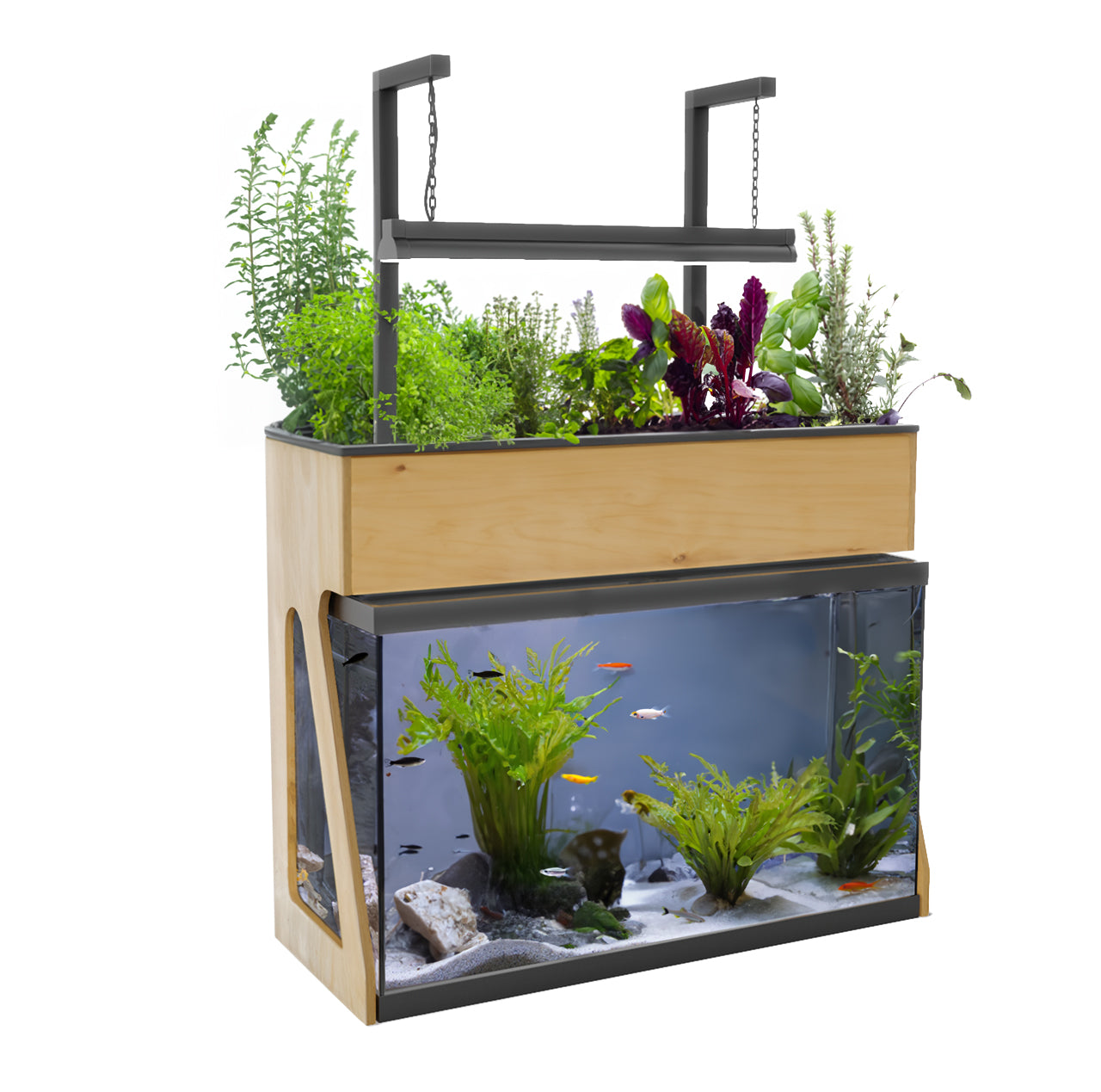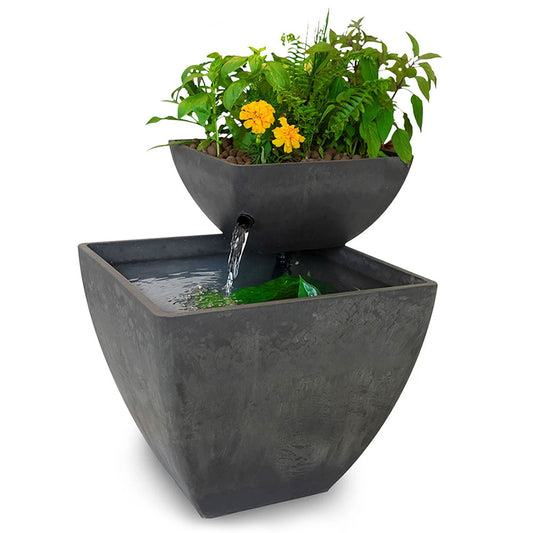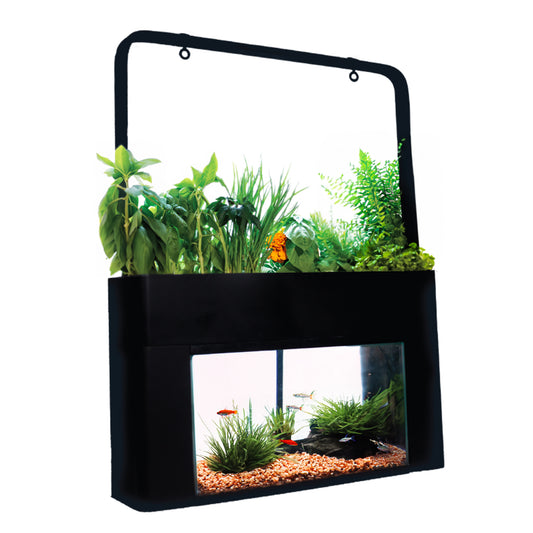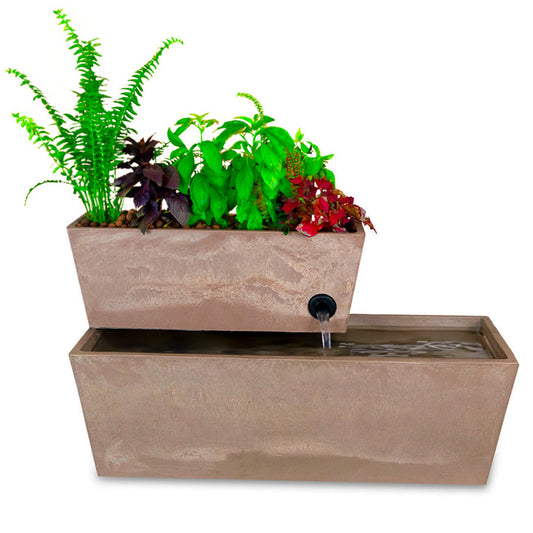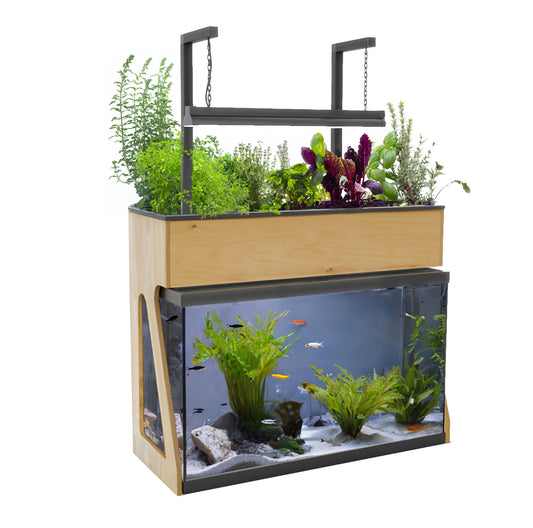In spite of their popularity, common plecos are a poor choice for the majority of aquariums. Many aquarium owners purchase them without knowing that these fish can reach up to two feet in length! They also eat a lot and grow quickly, and large plecos are difficult to find new homes for since they’re so common. To top it off, they’re an invasive species in a number of U.S. waterways; releasing them into the wild is illegal and can carry a hefty fine!
Unless you own a 200+ gallon aquarium and you want an authentic Amazonian giant, common plecos are best avoided! Stick to smaller species instead, such as…
Dwarf plecostomus: as with their larger cousins, this is actually a group of related fish rather than a single species (none of which are actually in the genus Plecostomus!). While they’re all based on a similar suckermouth catfish body plan, there is a significant amount of variation among dwarf plecos, including maximum size, coloration and pattern, and primary diet. Some of them don’t even eat algae!
The most common dwarf pleco variety in the aquarium trade is the “bristlenose” or “bushynose pleco,” named for the crown of ornate spiny bristles grown by the males (and some females) on the front of the head. Bristlenose plecos are good tank-cleaners, although they do require some meaty food to supplement their diet of algae, and they may eat live plants if underfed. The males can be somewhat territorial, charging other fish they see as competitors. The adult size of most bristlenose plecos in the aquarium is 5-6” in length, making them a bit too large for a 10-gallon aquarium but well suited to medium tanks of 20-50 gallons.
Seen a bit less frequently are rubber-lip plecos. Their reported adult size is between 4-7”, making them a stretch for a small tank. They’re a nonaggressive fish with a healthy appetite for algae and vegetable matter; they’ll clean algae efficiently but may need supplemental feeding.
Other more exotic dwarf pleco species come from a variety of rivers in South America and are frequently named for their striking patterns and coloration. They tend to be more rarer and more expensive; many can easily fetch prices of $50 at the aquarium shop, with very desirable varieties even going for several hundred dollars. Most are beautiful additions to the aquarium, but can be more sensitive and tricker to keep than their more common cousins. Well-known exotic plecos include Clowns, Zebras, Green Dragons, and Gold Nuggets. It’s a good idea to learn a little bit about the particular variety you’re considering before you decide!
Chinese Algae Eaters: these long, slender river fish are actually found throughout southeast Asia. They are harvested as a food fish in some areas and even used in the

preparation of a traditional Cambodian fish sauce. In the aquarium, they are typically rather poor algae eaters - they may take algae when young, but as they mature, they grow more omnivorous and will eat high-protein foods when they can. They also grow quickly, and though they rarely exceed 5” in captivity they have been recorded reaching 11” in length! To top it off, while they’re not predatory, they can be territorial and aggressive.
Siamese Algae Eaters: a common name for several closely-related and very similar species, Siamese Algae Eaters are among the best tank cleaners available in the aquarium trade. They are community-friendly, hardy, and willing to eat a wide variety of red and green algaes. These fish are naturally schooling but seem comfortable alone or in pairs; they can reach 4-6” in length at full size so even one may be a bit much for a small aquarium. Another carp-family relative, the Flying Fox, looks quite similar to the Siamese Algae Eater, sharing a similar fin profile and bold black lateral stripe, and the two are often confused in the aquarium trade.
Otocinclus: much smaller relatives of Plecostomus, this genus of “dwarf sucker” catfish aren’t quite as common in trade but can still be found readily at most aquarium shops. Most reach a maximum size under 2” long. They are quite docile and community-friendly, and will school readily, especially in large numbers. Their size makes them a popular choice for algae control in smaller aquariums, but they are somewhat less robust than their larger relatives and will succumb more easily to poor water quality. Being South American river fish, they prefer soft, gently acidic water, and may acclimate poorly to high alkalinity. Otocinclus should be gently added to a well-established, healthy system as they’re notoriously susceptible to shock.
Invertebrates: a wide variety of shrimp and snails appear in the aquarium trade, and many are excellent scavengers and tank cleaners. Two of the best are also among the most popular choices: cherry shrimp and nerite snails. Both are small (less than an inch long/across), peaceful, efficient, and great at algae reduction. Both will also reproduce readily if the conditions are right, though creating those conditions requires some care.
On the other hand, two even more common species are actually poor choices for algae control: ghost shrimp and apple snails (or “mystery” snails). While very easily available and often very inexpensive, both of these species are good general-purpose scavengers but will eat algae only reluctantly when little else is available.
Most shrimp are sensitive to water quality and are vulnerable to contaminants and medications that may be used for fish. Copper is widely considered deadly to freshwater invertebrates; the truth is that tolerance for many substances in the water varies significantly between species, and it’s a good idea to simply be cautious about adding supplements and medications or changing your source water.
While the concept of “algae eaters” is commonly understood, many people don’t know there’s so much variety to choose from! With this guide as a starting point, we hope you can select a utility fish that suits your needs, and avoid the all too common pitfalls that some of these critters can create.
